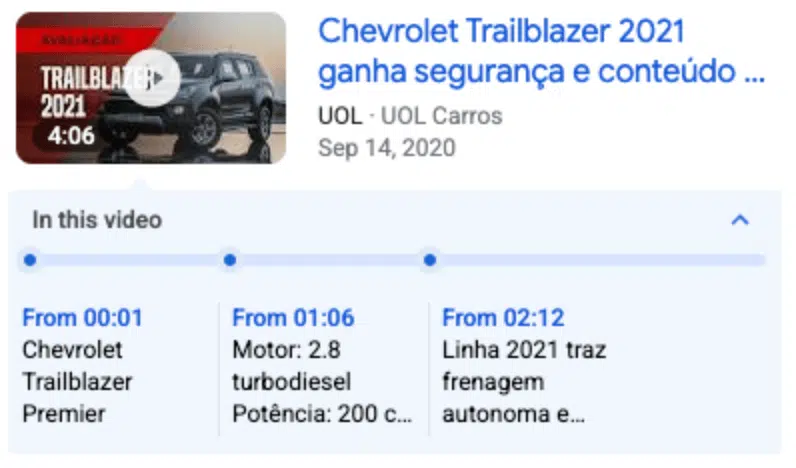Google officially launches SeekToAction for key moments for videos in search
Previously announced at Google I/O, SeekToAction markup is now out of beta.
At Google I/O, the company announced new ways for Google to understand how to timestamp your videos for key moments in Google Search. Today, Google said that SeekToAction markup is now out of beta and can be used for any site with videos.
What are key moments? Key moments are displayed in Google Search for videos where Google can determine the sections of timestamps of the video. Google lets searchers jump to sections of the video (key moments), directly from the search results.
Key moments look like this:

SeekToAction markup. Previously, Google used the YouTube description and timestamps in the description for creating these key moment timestamps. This SeekToAction markup (developer documents over here) tells Google how your URL structure works so that Google can display key moments that are automatically identified for your video. While SeekToAction properties aren’t required, you must add the potentialAction, potentialAction.startOffset-input and potentialAction.target properties if you want Google to understand how your URL structure works, so it can link users to a point within the video, Google said.
“All you have to do is tell Google the URL pattern for skipping to a specific timestamp within your video. Google will then use AI to identify key moments in the video, and display links directly to those moments in Search results,” Google said.
Tips for SeekToAction. Google has listed these tips for using SeekToAction markup for your videos:
- Your URLs must have the ability to deep link into some point other than the start point in the video. For example,
https://www.example.com/example?t=30starts 30 seconds into a video. - Use
SeekToActionmarkup on every video page where you’d like Google to automatically identify key moments, and follow our additional guidelines. Here’s a detailed example. - To automatically identify key moments in your video, Google must be able to fetch your video content files.
Google explained that SeekToAction markup applies only to videos embedded on your own site.
Why we care. With more and more videos showing in Google Search, you will want to take efforts to make your videos stand out from the rest. Using SeekToAction markup can help enrich your video results in Google Search to help improve click-through rates from Google Search to your videos.
Related stories
New on Search Engine Land